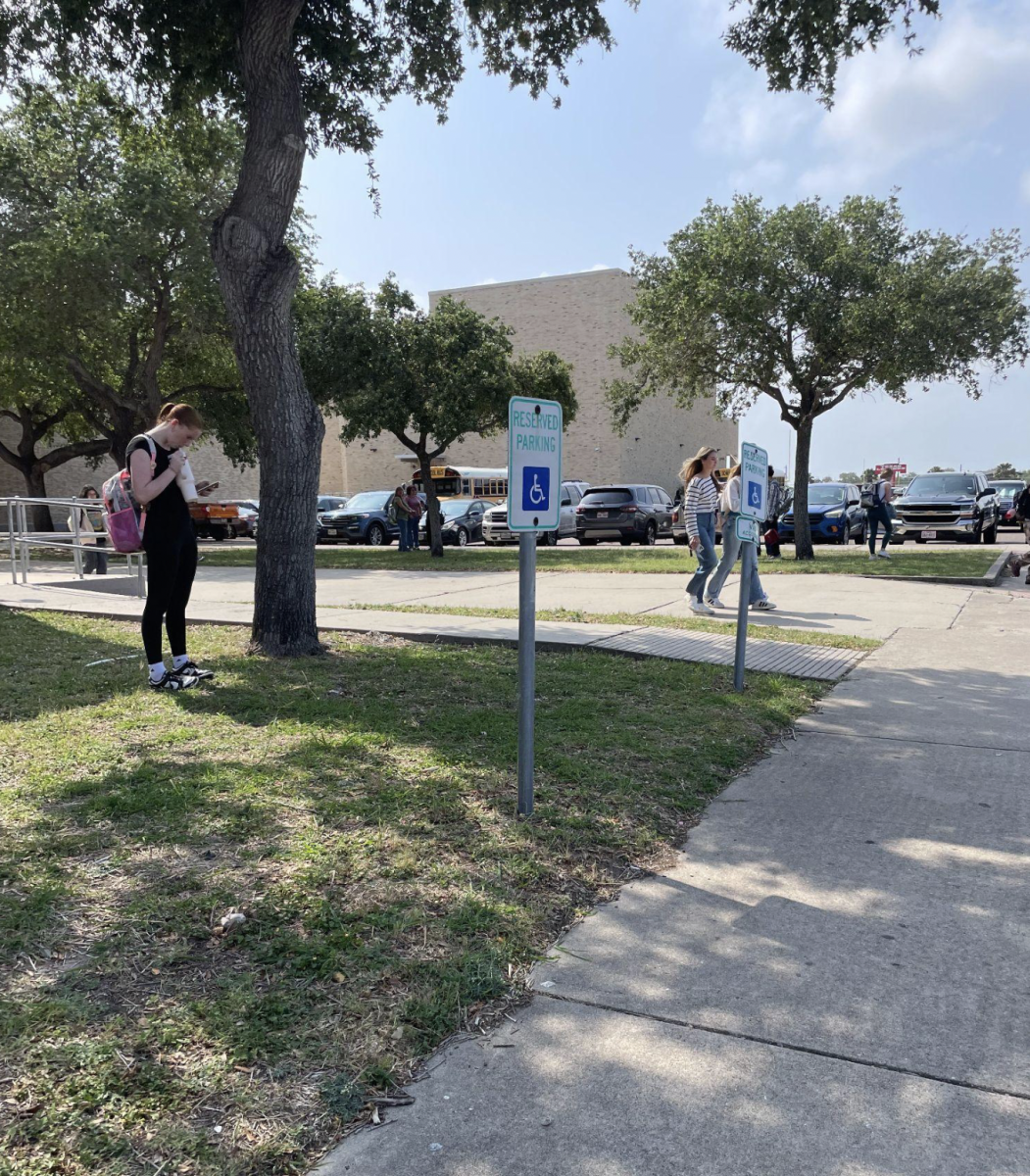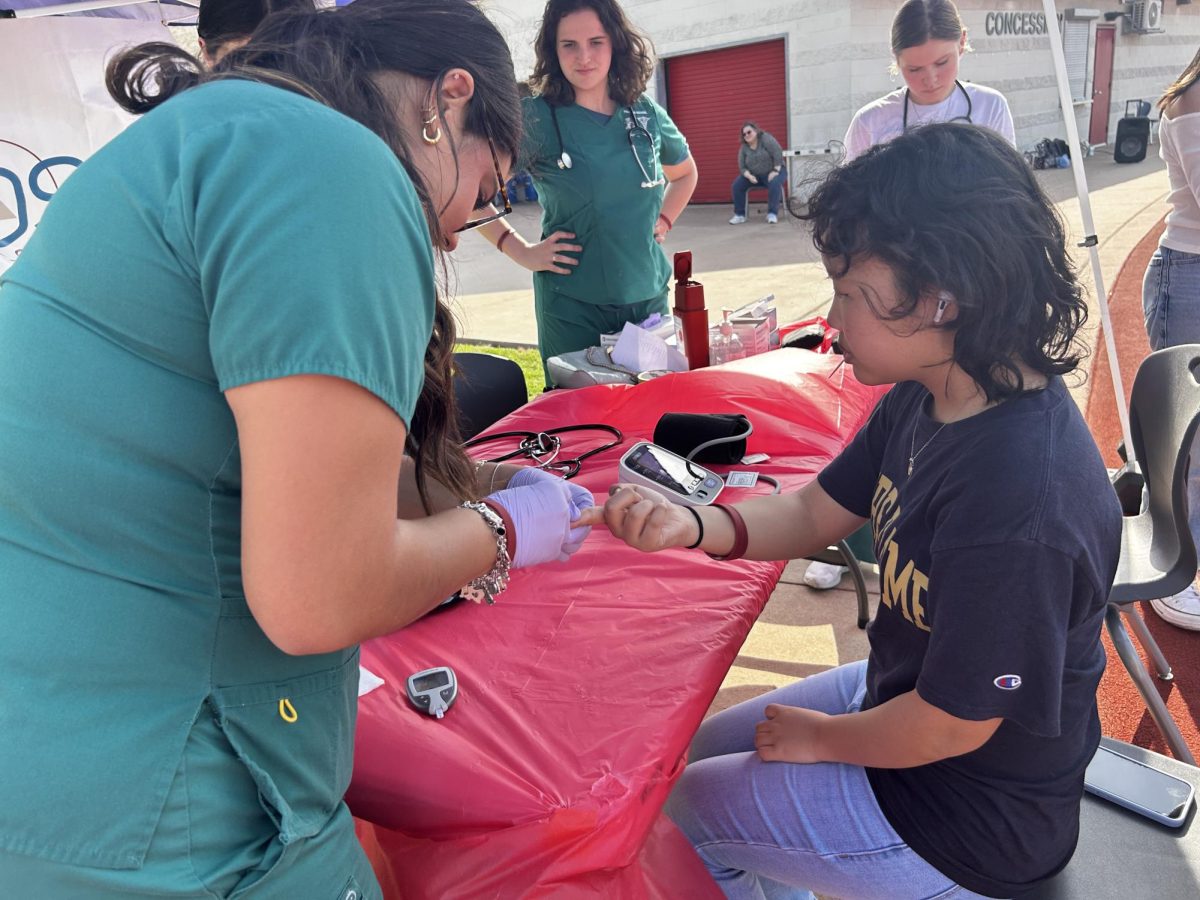From the moment they step into their first class of the day, many high schoolers are already viciously battling their suddenly heavy eyelids in an attempt to stay awake. As much as critics would like to claim that it’s “teenage laziness”, it’s not because they don’t care about learning; it’s because adolescent bodies are wired against the clock.
Throughout the Corpus Christi Independent School District (CCISD), middle and high school start times start as early as 8:00 a.m. depending on the student’s course schedule, with the standard start time being 8:50 a.m., in spite of the growing pool of studies that show these schedules don’t align with adolescent biology.
Dr. Judith Owens, director of the Center for Pediatric Sleep Disorders at Boston Children’s Hospital, stated in an interview for CHOC that while teenagers are often seen as lazy, it’s biology that explains their sleep patterns and why they seem so lethargic in the mornings. That same article went on to explain how “[d]isrupting these circadian rhythms with early school start times can cause chronic sleep deprivation, which leads to increased risk for obesity, depression, poor academic performance, substance abuse and driving accidents.”
It’s clear that sleep deprivation among students and staff alike is an issue that needs to be solved, and the solution isn’t as complicated as you might think
The Science is Clear
The fatigue teenagers feel when they step into the classroom isn’t just in their heads; there’s science to back it up. When humans go into puberty, which is around the time of middle and high school, they go through a shift in their circadian rhythms, more commonly known as the “sleep phase delay”, which, according to the Mayo Clinic, naturally causes them to fall asleep and wake up later than usual. Despite this fact, most high schools, not just those in Corpus Christi, start at 8:00 a.m., forcing teenagers to wake up before they get the amount of sleep they need to develop.
The interruption of natural circadian rhythm cycles aren’t just irregular — they actively harm people. Research from the Centers for Disease Control and Prevention (CDC) has linked early school start times to a host of negative outcomes, including poor academic performance, and what’s more, a study done by members of the American Academy of Sleep Medicine in 2020 suggests that starting schools later could reduce car crashes, improving safety.
A prime example of the impacts of shifting the start time of schools back comes from a study done in Seattle in 2018, during which public high schools pushed their start times back by almost an hour (from 7:45 a.m. to 8:45 a.m.). The results from the study show that pushing the start times back had many significant benefits: students gained an average of 34 more minutes of sleep per night (although that doesn’t sound that significant, it can make a difference in your ability to stay awake during first period), translating to better attendance across the board, fewer tardies, and increase in academic performance (particularly in first period classes).
The increases in academic performances weren’t minimal; they were very measurable. According to a University of Washington article published in December of 2018, there was a 4.5 % increase in final grades for those who took the class after start times were pushed back, showing just how impactful a near-one hour delay in start times can be for students.
Just as Dr. Matthew Walker, a sleep researcher and author of “Why We Sleep,” once said: “Sleep is the single most effective thing you can do to reset your brain and body.” If teenagers physically need sleep they aren’t getting, what’s the solution?
What’s the Solution?
CCISD has already beat these schools by scheduling high school start times as 8:50 for those who have a normal schedule, which is later than many districts across the state of Texas. While this meets the American Academy of Pediatrics’ minimum recommendation of an 8:30 a.m. start time, research and international models especially suggest that the benefits from pushing start times back even later could have an even larger impact.
The best example of this is Finland. A typical Finnish high school begins between 9:00 a.m. and 9:45 a.m., giving students more time to rest, eat, and prepare for the day, and the results from giving the students time to perform 3 simple acts have been profound: Finnish students have consistently outperformed their global peers in subjects like math, reading, and science, and they’re able to do so with less stress, more life satisfaction, and less time in the school day. The average Finnish high school doesn’t just begin from 9:00 a.m. to 9:45 a.m., they are also only in school for an average of 5 hours, and yet they outperform nearly every other country. That’s because their system isn’t just well-rested — it’s more effective.
However, the traditional American high school doesn’t have the structure of a Finnish school, begging the question: what would this look like for the high schools here, and specifically, how would it look for CCISD?
Luckily, the school district already operates on a tiered bus system, putting high schoolers last in the daily route rotations, meaning making a small adjustment to the times relatively simple. Shifting start times by just 20 minutes could bring out local schedules in line with the successful models of international schools, without changing the entire system and transportation logistics.
One possible schedule is as follows:
- Elementary Schools: insead of 7:50 a.m. – 3:10 p.m., it would be 7:30 a.m. – 2:30 p.m.
- Middle Schools: rather than 8:50 a.m. – 4:10 p.m., it would be 8:40 a.m. – 3:15 p.m.
- High Schools: in place of 8:50 a.m.– 4:10 p.m., it would be 9:10 a.m. – 4:00 p.m.
Why it Benefits Everyone
This schedule does mean slightly less time will be spent in schools, and although critics of later start times argue that the reduction in instructional hours would result in students’ learning being impaired, research suggests — and proves — the opposite. Just like in the 2018 Seattle experiment shows, better-rested students are naturally more attentive and retain more information, allowing them to perform better on exams, even with the school day being slightly shorter.
The reality is that although students might be physically present at school, the majority of them are still mentally asleep, but when start times are pushed back, they become better rested and are able to think more clearly, and as the APA states, reviews have shown that when schools start later, attendance improves, tardiness drops, and teachers report stronger engagement from their classes.
Students aren’t the only ones who would benefit from a change in schedule; teachers would also see a benefit. When teachers have calmer classrooms and more focused students as a result of later start times, their instructional times becomes that much more productive. The teachers themselves also get extra time to plan, travel, and take care of their own families, helping to improve their work-life balance, increasing job satisfaction.
The issue of sleep deprivation and just general exhaustion among the teenage population goes beyond school start times. It’s also about rethinking how the system supports student health, achievement, and general well-being. With the increase in support from health organizations, educators and teachers alike, the time for change is clearer than ever.
The Corpus Christi Independent School District has the infrastructure, data, and opportunity to lead the way. Drawing from international success stories and domestic pioneers in the start time bucket could make this district a model for others across Texas, as well as the country.
If change needs to happen, what better time to do it than now?










